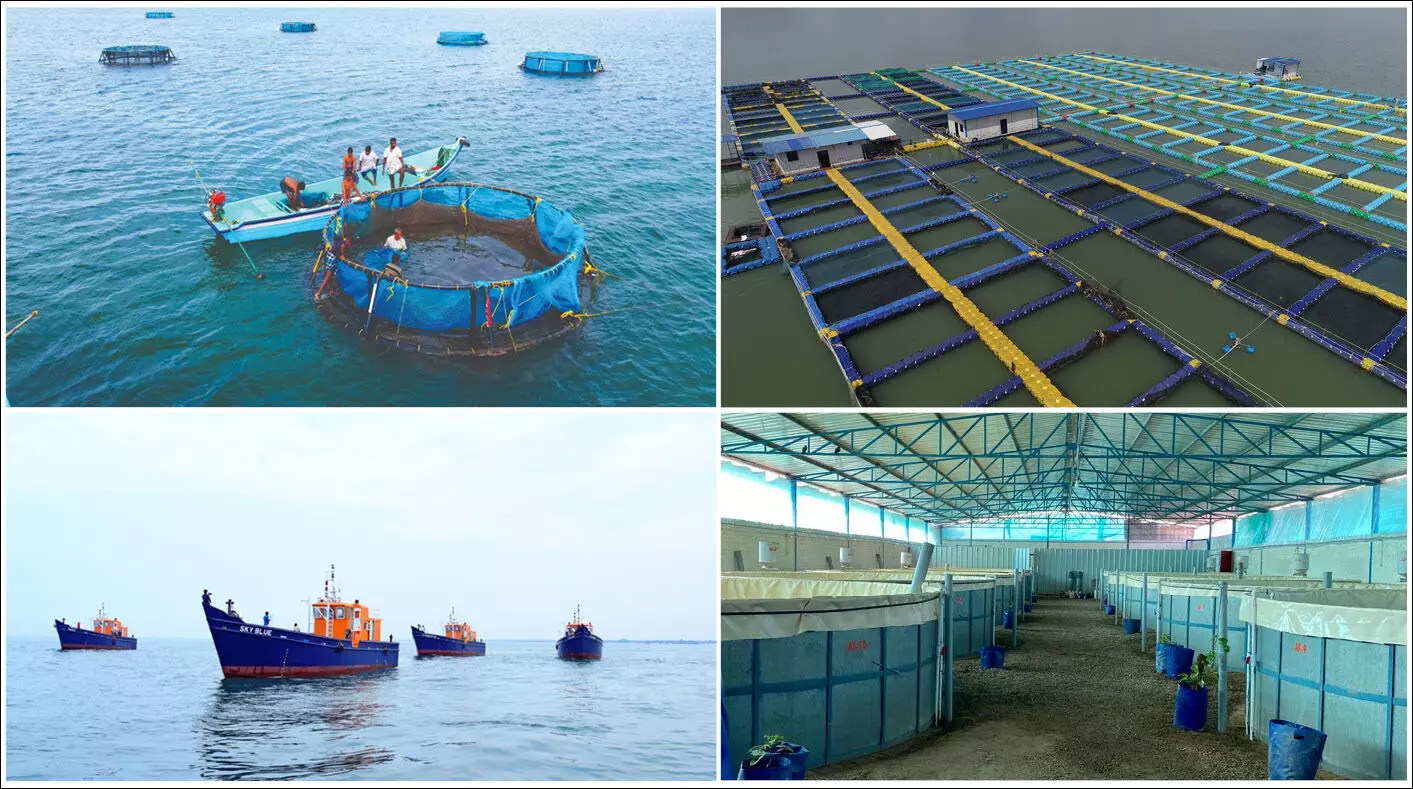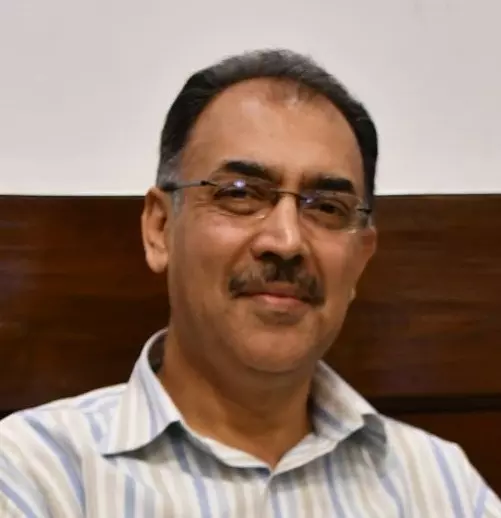An essential boost
As the World Fisheries Day approaches, there is a pressing need to strengthen cold chain logistics and market access to bolster the fisheries ecosystem in India

Somya Sathyanarayana is a fish farmer from Karnataka, who has successfully adopted the ‘Recirculatory Aquaculture System’ to produce high-value fishes such as Tilapia. This technology enhances stocking density in addition to water saving. On the other hand, Navkishar Gope is a fish farmer from Jharkhand, who has taken up cage culture to produce Pangasius fish. Herein, intensive focus is laid on feeding, water exchange and timely harvest. Dharma Lingam from Andaman & Nicobar Islands, in addition, is a fish farmer-turned entrepreneur who runs ice plants to preserve fish catch from the sea such as cobia, pompano, grouper and tuna. Dilleshwari from the same area is a fishing vessel owner who has set up a fish kiosk to enable storage, marketing, and sales.
The above success stories and many more across the country are a part of a robust ecosystem for fisheries and aquaculture, nurtured through the Pradhan Mantri Matsya Sampada Yojana (PMMSY). The latter, with the cooperation of state governments, has plugged critical gaps in fisheries development for more than 2.8 crore fishers/fish farmers at the primary as well as secondary levels. Fish production, as a result, has registered an average annual growth rate of 8 per cent during the last ten years. It had touched an all-time high of 175.45 lakh tonnes in 2022-23 from 95.79 lakh tonnes in 2013-14. More importantly, the fish productivity had increased to 4.7 tonnes per hectare in 2022-23 from three tonnes per hectare in 2013-14. On the other hand, our seafood exports, with primacy of frozen shrimps, have seen a 111 per cent increase too.
A critical factor in the above growth story, other than focus on infrastructural projects such as fish harbours and landing centres, has been the impetus given to several welfare initiatives for fishermen/women. These include grant of livelihood support during the fish breeding ban periods, higher accident insurance cover, and the availability of institutional credit support through Kisan Credit Card (KCC) to the fisheries sector. Sustained attention has also been paid to stock replenishment of fish through promotion of sea/river ranching and construction of artificial reefs. In fact, PMMSY has enabled a ‘whole of government approach’ to fuel such holistic growth.
Experts, however, emphasise upon a few key other issues to further expand the sector for higher income generation, with livelihoods of small-scale fishers as the focal point.
First, adoption of ‘cluster or area-based approaches’ to enhance competitiveness and economies of scale. The initiation of ‘Aquaparks’ is a testimony towards adopting such an approach. These parks have been conceptualised on the hub and spoke model as centres of production for quality fish brood, seed, feed, post-harvest processing infrastructure, business logistics etc. These parks will also create alternative livelihood avenues in areas such as seaweed, ornamental fish, and pearl cultivation. Four such parks are coming up in the states of Tamil Naidu, Arunachal Pradesh, Odisha, Andhra Pradesh, and Uttarakhand.
Second, creation of a robust environment for private sector participation through entrepreneurship and innovation by promoting start-ups. ‘Zaara Biotech’ is an example of a startup that has been incubated to develop seaweed and algal-based products. These products are being sold through e-commerce platforms and exported as well to countries such as UK, Australia, Japan etc. Several such start-ups are deepening their presence in areas of disease detection, water quality monitoring and automated feed systems.
Third, effective collectivisation of fishers and fish farmers through producer organisations and cooperatives to increase their bargaining power. AUROFISH is an example of a cooperative with a network of 20 fishers promoted by a women entrepreneur, Anitha Muthuvel, in Pondicherry. The cooperative sources fish responsibly and market ready-to-eat products as well. Efforts are also on to the connect such cooperatives and fish producer organisations to the Open Network for Digital Commerce (ONDC).
Fourth, promotion of deep-sea fishing with technologically advanced fishing vessels including enhancing their communication systems. While Cochin Shipyard has produced such modern vessels, the Indian Space Research Organisation (ISRO) has developed indigenous transponders for SOS signalling, identification of fishing potential zones, and real-time communication. Without doubt, sustainable fishing and hygienic berthing at harbours needs to be coupled with safety of fishermen at sea.
Fifth, well-structured fisheries extension support services that reach out to the last mile. The involvement of youth as ‘Sagar Mitras’ in coastal districts has been initiated both for outreach as well as survey of fish catch at harbours and landing centres. In addition, ‘Sagar Parikrama’ is a landmark initiative in coastal districts to bring highest echelons of government to the fishers’ doorsteps through community engagement.
Experts also contend that the fisheries management and regulatory framework should effectively deliver towards ease of doing business. The Coastal Aquaculture Authority Amendment Bill, passed by the Parliament recently, simplifies the processes of farm and hatchery registration. It also focuses on disease monitoring, especially keeping in view the need to further increase shrimp exports and promote mariculture.
Myriad success stories of technology infusion amongst beneficiaries under the PMMSY programme ecosystem have flowered across the nation. The Indian Council of Agricultural Research (ICAR), in addition, continues to pioneer research in fish genetic improvement, species diversification and climate change impacts on fisheries.
The need of the hour is to further strengthen the fisheries’ cold chain logistics and market access backed by dynamic market intelligence. To do so, micro and small enterprises in the sector need to be incentivised to take up measures to enhance their value chain efficiencies and traceability mechanisms.
The writer is Secretary, Department of Fisheries, Ministry of Fisheries, Animal Husbandry & Dairying, Government of India. Views expressed are personal




